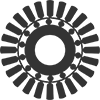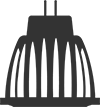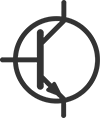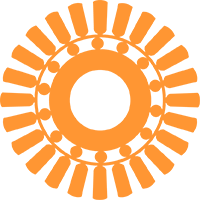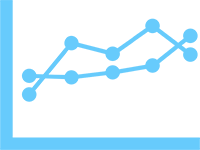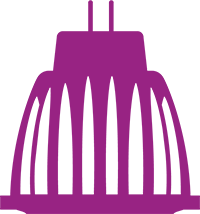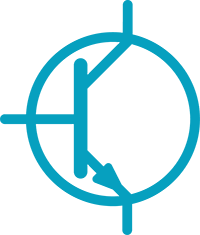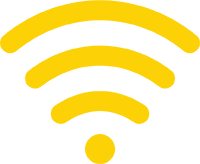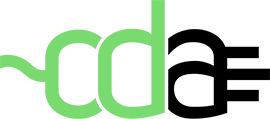20 December 2021, Stockholm. The IEA 4E Solid State Lighting Annex (SSL Annex) today published the final report from its 2017 Interlaboratory comparison. With 36 participating laboratories from 19 countries with a total of 42 goniophotometric instruments, this is the largest interlaboratory comparison of such equipment ever undertaken. This comparison aims to answer many questions of importance for laboratories as well as for policy makers involved in performance regulations and enforcement. For instance, it helps answer if and when more compact and less costly near-field goniophotometers can be used for testing directional lamps.
Click Here to download a PDF copy of the Final Report for IC 2017
The International Energy Agency’s Energy Efficient End-use Equipment (IEA 4E) Solid State Lighting Annex (SSL Annex) organized the 2017 Interlaboratory Comparison (IC 2017) to investigate the level of agreement in measurements of SSL products by various types of goniophotometers including near-field type and source-rotating type, as well as mirror-type goniophotometers which are most commonly used.
“We are pleased to be publishing these results today,” said Professor Georges Zissis, Chair of the IEA 4E SSL Annex Management Committee, “these findings will make a very significant contribution to the field of lighting metrology, especially laboratories that are using goniophotometers to measure light emitting diode (LED) lamps and luminaires.”
While mirror-type goniophotometers are very accurate and precise instruments, they are typically very large and often require large dark rooms with light adsorbing materials. With an increased need for testing LED directional light sources and LED luminaires linked to performance regulations and compliance testing, many labs are looking towards more compact and affordable equipment for testing.
IC 2017 used the international standard CIE S 025 (or equivalent European standard EN 13032-4) as the test method for this comparison. IC 2017 was also designed to be in compliance with ISO/IEC 17043 so that it may serve as a proficiency test for SSL testing accreditation schemes around the world. Further details of the design of the comparison are available in the IC 2017 Technical Protocol (published in IEA SSL Annex website).
The comparison artefacts used in IC 2017 were (1) narrow beam LED lamp with ≈ 12° beam angle; (2) 60 cm x 60 cm indoor planar LED luminaire, (3) 60 cm long linear batten LED luminaire including small upward light emission, and (4) street lighting LED luminaire having asymmetric intensity distributions.
Reasonable agreement between test labs – and some problems
IC 2017 verified reasonable agreement overall among the participants’ measurements of the important quantities such as total luminous flux, luminous efficacy, and chromaticity, while it showed unexpected larger variations for some electrical quantities, and revealed a number of specific problems in the measurements of goniophotometric quantities. These results indicate that more guidance is needed in CIE S 025 or other relevant standards for goniophotometric measurements of SSL products.
“It was very interesting to review the data from all the participants, to find how the large variations were caused in some cases and where the standard was not followed correctly.” said Dr. Yoshi Ohno, NIST Fellow at the National Institute of Standards and Technology in the USA and Task Leader of IC 2017.” “We are reporting our findings to the international standards bodies, to help them improve the guidance and the clarity of the standards used.”
In addition to the comparison across the 42 laboratory instruments, a second analysis was conducted comparing the three different types of goniophotometers: mirror type, near-field type, and source-rotating type. All test results were grouped into these three goniophotometer types and presented in graphs for each quantity and each artefact to allow for comparisons among them.
After evaluating all the results, overall, no significant differences were observed between the three types, though the near-field goniophotometers showed slightly larger but still an acceptable level of deviation in the results for very narrow or structured intensity distributions. The source-rotating type goniophotometers (with operating position correction) did not show any issues, except that some of the instruments did not cover a sufficient angle range in the upward direction for the batten luminaire.
Comparison Scheme
IC 2017 was led by the National Institute of Standards and Technology (NIST) in the United States, and two reference laboratories (called Nucleus Laboratories in IC 2017) that were assigned to carry out the measurement rounds. These two reference labs were the Korea Institute of Lighting and ICT (KILT) in the Republic of Korea, and Laboratoire national de métrologie et d’essais (LNE) in France. To establish equivalence of measurements between these two laboratories, a Nucleus Laboratory Comparison was conducted, using two sets of the comparison artefacts and measuring all the comparison quantities. The details and results of this comparison are available in IC 2017 Nucleus Laboratory Comparison Report (published on IEA 4E SSL Annex website).
IC 2017 was carried out as a star-type comparison between each participant and one of the Nucleus Laboratories. The Nucleus Laboratories prepared and measured the artefacts, shipped them to the participants, and measured them again upon their return. If reproducibility was poor, the measurement of a particular artefact with the participant was repeated.
Analyses were conducted to compare the results across the 42 laboratory instruments but also to compare results among different types of goniophotometers for each quantity and each artefact type to assess their equivalence. The first analysis presents comparisons among all 42 goniophotometers for each quantity and each artefact. The analysis of the results of general photometric and colorimetric quantities and electrical quantities found:
- Total Luminous Flux – Participants’ results were mostly within ± 5 % from the reference value, which was an expected result.
- RMS Current – The results showed much larger variations than expected, with standard deviation of ≈ 3 % for the LED lamp, even though participants’ reported measurement uncertainties were typically less than 1 % (expanded uncertainty, k=2). The variability depended very much on the artefact; the standard deviation of RMS current for the indoor planar luminaires was only 0.5 %.
- Colour Quantities – The results of chromaticity coordinates u’, v’ were in good agreement, mostly within ± 0.002 from the reference value, with a few outliers for each artefact. The results of CCT ranged from a standard deviation of 26 K for ART-1 (nominal CCT 2700 K) to 91 K for ART-2 (nominal CCT 5700 K), which were considered reasonable. Note that the participants were allowed to use an integrating sphere system equipped with a spectroradiometer or a goniophotometer equipped with a spectroradiometer for colour measurements.
Free Webinars to present the findings
Dr. Yoshi Ohno, Task Leader of IC 2017, will give two free webinars to present the results of IC 2017 and take questions. The content of both webinars will be the same, however one is scheduled for the Australian/Asian time zone and one for the European/North American time zone. Please click on a link below to register for one of the webinars. Note that both webinars will be recorded and the recordings will be available on our website:
- Click here to register for the webinar on Jan 25, 2022 at 13h00 in Canberra, Sydney (Asian / Australian time zone)
- Click here to register for the webinar on Jan 25, 2022 at 15h00 in Brussels, Stockholm (European / North American time zone)























